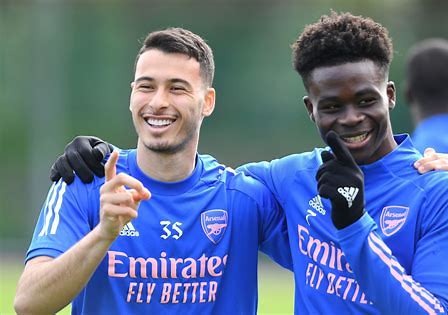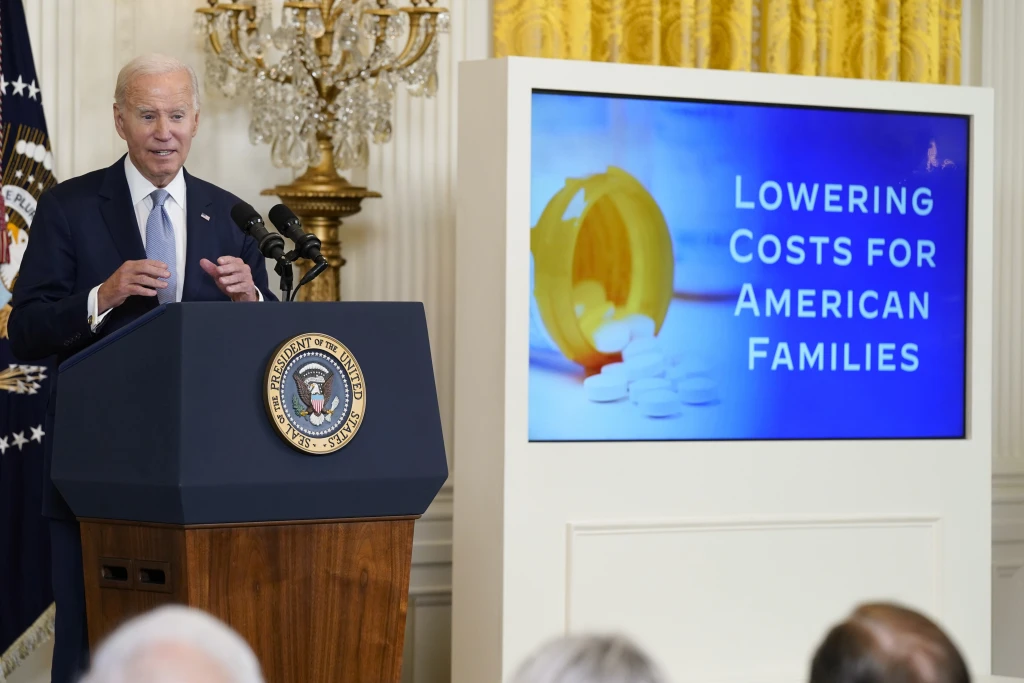
Last season, Arsenal’s wingers were their match-winners.
Bukayo Saka and Gabriel Martinelli scored and assisted 25 and 20 league goals respectively. At least one of the pair had a goal involvement in 25 of Arsenal’s first 30 Premier League games. Of the 11 league games where they were not involved in goals, Arsenal won five, drew three and lost three – that’s half of the 12 games in which they dropped points.
Opponents therefore have an obvious game plan when facing Arsenal in 2023-24: stop Saka and Martinelli. To do so, most defend deeper and more passively to minimise space, often with a back five for additional reinforcement, allowing Arsenal possession but doubling up out wide to prevent one-v-one situations.
Premier League opponents have allowed Arsenal 18 passes before making a defensive action this season, a rise from just under 15 passes last season. Arsenal are having fewer total possessions per game (from 85 down to 80) but three more sequences of 10+ passes, and their direct upfield speed – how quickly they progress the ball upfield in metres/second – has dropped by 18 per cent.
“I feel like (in) a lot of games, I’m facing a double team with two guys on me, and it’s the same for Gabby (Martinelli),” said Saka after Arsenal’s 1-0 away win over Brentford last month. “I keep watching all my games back trying to find a solution, what I can do better. I just feel like I need to understand that this is how it’s going to be this season, I just need to deal with it and keep finding a way.”
In Arsenal’s last five games, against Burnley, Brentford, Lens, Wolverhampton Wanderers and Luton Town, they have beaten an opponent playing a back five. Their winning streak of six games is their longest in all competitions in over a year.
“You need a lot of points to win the Premier League,” said head coach Mikel Arteta after Arsenal’s last-minute win over Luton, praising his side’s ability to “win six games in a row in different ways”. Broadly speaking, they have found four different ways to respond to Saka and/or Martinelli being double-marked:
Gabriel Jesus making fewer left-sided rotations and pinning the left centre-back to support Saka
Back-post, inswinging crosses from the winger
Bait-and-switch attacks to isolate one-v-one
Exploiting space created for full-back or No 8 just outside the box
The Gabriel Jesus role
Last season, the Brazil forward frequently rotated wide-left, while Martinelli drifted inside and No 8 Granit Xhaka crashed the box. The left side of Arsenal’s attack has been a lot more freestyle than their pattern-based approach down the right, but this season Jesus is moving across more to Saka’s side.
For example, against Wolves, who defended in a 5-3-2 and doubled up on Saka with left central midfielder Jean-Ricner Bellegarde and wing-back Hugo Bueno.
Jesus worked to pin left centre-back Toti Gomes, who had been part of excellent performances that beat Manchester City and Tottenham Hotspur (both 2-1), limiting No 9s Erling Haaland and Son Heung-min to just one shot each in the process.
Arsenal’s opener owes to Jesus’ strength and awareness, but look how Arsenal exploited the space vacated by Bellegarde… Saka threads an eye-of-the-needle pass into Jesus, who holds off Toti, and right-back Takehiro Tomiyasu makes an underlapping run.
Saka then makes the third-man run and is duly played in by Tomiyasu. He finishes from a slight angle, but with a clear sight of goal from under 12 yards out – as good a chance as can realistically be created in open play against a team defending this way.
Wolves head coach Gary O’Neil was honest afterwards: “to concede the way we did is disappointing. Especially the first one – a situation that we practised, worked on a lot, (to have) so many bodies around Saka.”
Arsenal’s recent winner away to Brentford is a good example. Arteta’s team play across the pitch through Declan Rice, rather than hitting a direct switch from Oleksandr Zinchenko to Martin Odegaard, clearly wary of Brentford’s counter-attacking threat.
Odegaard carries the ball forward and sets it back for Saka. The key here is Arsenal’s three-v-two overload at the back-post, with left No 8 Kai Havertz and left winger Leandro Trossard joining No 9 Eddie Nketiah. Arsenal’s wingers are making a lower proportion of runs to attack crosses this season, but this is one instance where they use them and make them count.
Saka still has two Brentford players nearby. “It’s about eliminating their threats. Martinelli and Saka, we are very aware of doubling up on them,” Brentford head coach Thomas Frank said last season. This is where Arsenal keep the ball on one side, use short passing circuits to draw the opposition over. They then switch play to the opposite flank to exploit one-v-ones.
“It’s not going to be as fluent, it’s not going to be as hectic, because there’s no space to run,” Arteta said earlier this season, referencing game state, specifically that fewer early Arsenal goals mean teams are forced to come out at them less. He has talked about Arsenal needing to “change gears” and “play at different paces”, which is precisely this tactic.
Recently, Saka has been targeted with long passes from deeper positions, while Martinelli receives switches more often. Arsenal’s frequency of hitting switches (per game) might be marginally down on last season, but the share of switches to Saka and Martinelli (combined) is up – from 58.5 per cent to 70.3 per cent.
The build-up to their second goal against Wolves is proof of this. Arsenal have settled possession down the left, with Martinelli up against a double team of midfielder Boubacar Traore and wing-back Nelson Semedo.
Martinelli checks back and passes to Rice before running infield. Rice switches to Saka, playing over the Wolves midfield and isolating him against Bueno – before Bellegarde can get across.
Saka, knowing how Wolves are going to defend him, dribbles outside. His cross is overhit, targeting the back post, where Trossard and Jesus are two-v-two.
Arsenal’s counter-pressing has been good recently, able to seize on second balls to prevent counter-attacks and create second-phase chances because they have so many players in advanced positions.
Zinchenko gets to the ball first, plays a one-two with Jesus and pulls a low cutback for Odegaard — his trademark finish, in space, despite Wolves having their back five and midfield three in the box.
For all its disadvantages, having your wingers doubled up on does provide one benefit: opponents vacate central space, so if you move your players and the ball played quickly enough, it is exploitable.
Arsenal’s season started with Ben White, their overlapping right-back last season, playing at right centre-back, with Thomas Partey playing at full-back. It meant Saka received the ball more quickly, but often in deeper positions and without support, as Partey did not provide him with many overlaps or underlaps.
The introduction of Tomiyasu at right-back, with Odegaard drifting more into the right half-space, has helped. For instance, when Bournemouth doubled up on Saka, he could return a simple pass to Odegaard on the edge of the area, and he provided the back-post cross for Jesus, whose header across goal was poked in by Saka.
Comparing Odegaard’s chance-creation zones, he has a rise of 16 per cent in chances created in the right half-space, just outside the box, from last season.
On the opposite side, this role is fulfilled by Zinchenko, with the left No 8 – Havertz or Trossard in recent games; nominally forwards, not midfielders – attacking the box. For Arsenal’s opener against Burnley, right wing-back Vitinho and right central-midfielder Johann Berg Gudmundsson press Martinelli.
He sets it back for an unmarked Zinchenko to cross, with three Arsenal shirts in the area – Saka is one, having rolled in, and he wins the first contact before Trossard pokes in the opener.
Arsenal’s opener against PSV Eindhoven in the 4-0 Champions League group stage win is another example. They split the 4-2-3-1 mid-block with a quick passing pattern: Zinchenko to Rice, who finds Odegaard in the half-space, and he plays wide to Saka.
PSV Central midfielder Joey Veerman gets across to support his full-back Sergino Dest but this vacates space on the edge of the box for Odegaard, who is joined by Zinchenko. Saka sets it back…
… and Odegaard shoots, with Walter Benitez only parrying his dipping effort. Saka then follows up and taps in the rebound. A quick, incisive breakdown – albeit with a scrappy finish – against a defence which has conceded just six goals in 15 league games, with a 100 per cent winning record, and who beat Arsenal in a Europa League game in Eindhoven last season.
Saka’s assist for Martinelli away to Luton this week was the first time the pair have combined for a goal this season (and just the sixth shot), in close to 1,000 onfield minutes together. Last season, only Kevin De Bruyne to Erling Haaland (eight goals) and Bruno Fernandes to Marcus Rashford (six goals) were more frequent assist/goalscorer combinations than Saka to Martinelli, who combined for 25 shots and five goals.
It is a testament to Arsenal’s quality that teams invariably sit back against them and defend with such wide coverage, but Arteta’s team are picking opponents apart with the sort of variety seen from title winners – something the manager spoke about in the summer, noting that Manchester City do the same.
When unassuming teams do come out at them – see Lens, PSV and Sevilla at the Emirates in the Champions League – Arsenal blow them away and their wingers rack up the goals and assists; Martinelli had 17 dribbles against Sevilla, the second-most by any player in a Champions League game this season.
So far, Arsenal “keep finding a way” against double-team marking, to use Saka’s words, and if they can maintain this level of problem-solving for the rest of the season, a first Premier League title for 20 years is a distinct possibility.
- The Athletics report











